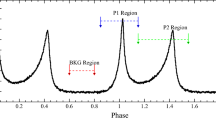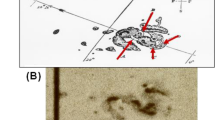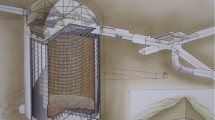Abstract
Gamma-ray burst spectroscopy has at times been thought of as the key to understanding these mysterious events, and at others as a source of disappointment and confusion. Early spectral measurements contained evidence for cyclotron-line-like absorption and emission features. These results were the main anchor for the galactic neutron star paradigm for the origin of gamma-ray bursts. Ginga provided striking confirmation with evidence in three bursts for cyclotron absorption with both first and second harmonics present. The absorption line energies were consistent with the teragauss magnetic fields expected for neutron stars. The BATSE experiment on CGRO has dealt a severe blow to this paradigm. BATSE has found no evidence for the expected galactic anisotropy and also no evidence for cyclotron lines. The exact degree of inconsistency between BATSE and earlier GRB line results remains a complicated and unresolved question. In general, burst spectra display a wide variety of both spectral and temporal behavior. In essentially all bursts where spectral measurements are possible, the spectrum evolves during the burst. This spectral complexity and variability has presented researchers with a challenging task. At the present time, only the broadest correlations and characterizations are in hand. This paper will; 1) give a brief historical overview of GRB spectroscopic measurements and 2) provide a summary of the current observational situation with emphasis on the BATSE/Ginga controversy.
Similar content being viewed by others
References
Mazets, E. P.et al.: 1980,Astrophys. Space Sci 80, 3.
Mazets, E. P.et al.: 1981,Nature 290, 378.
Murakami, T.et al.: 1989,Publ. Astron. Soc. Japan 41, 405.
Band, D.et al.: 1993,Astrophys. J. 413, 281.
Ford, L.et al.: 1995,Astrophys. J. 439, 307.
Mallozzi, R.et al.: 1995,Astrophys. J., submitted.
Norris, J.,et al.: 1995,Astrophys. J., in press.
Mitrofanov, I.et al.: 1995,these proceedings.
Fenimore, E. E. and Bloom, J. S.: 1994,Astrophys. J., in press.
Hueter, G. J.et al.: 1982, in W. Brinkmann and J. Trumper, ed(s).,Accreting Neutron Stars, MPE Report 177: Garching, 213.
Murakami, T.et al.: 1988,Nature 335, 234.
Palmer,et al.: 1994,Astrophys. J. 433, L77.
Band,et al.: 1995,Astrophys. J., submitted.
Murakami, T.et al.: 1992, in C. Hoet al., ed(s).,Gamma-Ray Bursts, Cambridge Univ. Press: Cambridge, 239.
Sommer, M.et al.: 1994,Astrophys. J. 422, L63.
Hurley, K. H.et al.: 1995,Nature 372, 652.
Author information
Authors and Affiliations
Rights and permissions
About this article
Cite this article
Teegarden, B.J. The energy spectra of gamma-ray bursts: old puzzles, recent analysis and new results. Astrophys Space Sci 231, 137–144 (1995). https://doi.org/10.1007/BF00658603
Issue Date:
DOI: https://doi.org/10.1007/BF00658603




